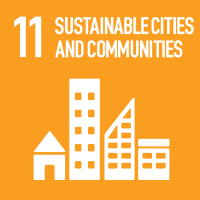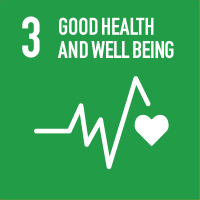Studying at the University of Verona
Here you can find information on the organisational aspects of the Programme, lecture timetables, learning activities and useful contact details for your time at the University, from enrolment to graduation.
Study Plan
This information is intended exclusively for students already enrolled in this course.If you are a new student interested in enrolling, you can find information about the course of study on the course page:
Laurea interateneo in Ingegneria dei sistemi medicali per la persona - Enrollment from 2025/2026The Study Plan includes all modules, teaching and learning activities that each student will need to undertake during their time at the University.
Please select your Study Plan based on your enrollment year.
1° Year
| Modules | Credits | TAF | SSD |
|---|
2° Year activated in the A.Y. 2024/2025
| Modules | Credits | TAF | SSD |
|---|
3° Year It will be activated in the A.Y. 2025/2026
| Modules | Credits | TAF | SSD |
|---|
1 module among the following| Modules | Credits | TAF | SSD |
|---|
| Modules | Credits | TAF | SSD |
|---|
| Modules | Credits | TAF | SSD |
|---|
1 module among the following| Modules | Credits | TAF | SSD |
|---|
Legend | Type of training activity (TTA)
TAF (Type of Educational Activity) All courses and activities are classified into different types of educational activities, indicated by a letter.
Inorganic and Organic Chemistry (2023/2024)
Teaching code
4S009866
Academic staff
Coordinator
Credits
6
Language
Italian
Scientific Disciplinary Sector (SSD)
CHIM/07 - PRINCIPLES OF CHEMISTRY FOR APPLIED TECHNOLOGIES
Period
Semester 1 dal Oct 2, 2023 al Jan 26, 2024.
Courses Single
Authorized
Learning objectives
The course aims to provide the basic knowledge for the understanding of chemical phenomena and of the properties of biological interest molecules.
Prerequisites and basic notions
Nothing.
Program
FIRST CONCEPTUAL BLOCK: STRUCTURE AND PROPERTIES OF MATTER: Chemical substances and formulas. The atom. Amount. Electronic structure and periodic properties of atoms: orbitals; electronic configurations of the elements; the periodic table. The chemical bond: Lewis theory of the covalent bond; notes on the theories of valence bond and molecular orbitals; hybridization and resonance; the ionic bond, the metallic bond. Weak ties. SECOND CONCEPTUAL BLOCK: CHEMICAL SUBSTANCES, THEIR TRANSFORMATIONS AND REACTIVITY: Hints of thermodynamics and thermochemistry. Solutions. Chemical balance. Equilibria in solution. Electrochemistry (galvanic and electrolytic cells, use of electrochemical series). THIRD CONCEPTUAL BLOCK: CHEMICAL REACTIVITY: Chemical reactions. Types of reactions. Stoichiometry. FOURTH CONCEPTUAL BLOCK: CHEMICAL KINETICS AND ORGANIC CHEMISTRY: Kinetic equations, concepts of activation energy, molecularity, steric factor. Integrated reaction rate laws. Relationship between kinetic constant and equilibrium constant. Introduction to catalysis. Catalysts, homogeneous and heterogeneous catalysis. Langmuir isotherm, active sites. Introduction to organic chemistry: aliphatic hydrocarbons, alkanes, alkenes and alkynes, structure and nomenclature. Properties and reactivity of hydrocarbons. Substitution, addition and elimination reactions. cyclic hydrocarbons. Aromatic hydrocarbons, benzene and its derivatives. Electrophilic substitution reactions of benzene Polar organic compounds. Concept of polarity and its influence on properties. Halogen alkanes, alcohols. Alcohols as fuels. Ethers, amines. Structure, properties and reactivity. Carbonyl compounds. Aldehydes and ketones. Carboxylic acids, esters and amides. Structure, properties and reactivity. Palm oil problem. Biodiesel. Molecules of biological interest.
Bibliography
Didactic methods
Lessons delivered in person and in streaming, with the support of slides, and, as far as possible, with the involvement of students. Possibility of carrying out exercises and leaving students to complete the resolution of exercises as learning and self-assessment tests.
Learning assessment procedures
At the end of the teaching, a written test, lasting an hour and a half, is envisaged as an exam, consisting of questions on theory and exercises relating to the entire program. During the writing the use of the calculator and the consultation of the periodic table and the table of potentials are allowed (if necessary and in any case provided by the teacher).
Evaluation criteria
The assessment will be based on the verification of the concepts received by the written test described in "Modalità d'esame"
Criteria for the composition of the final grade
Acceptance of the written grade as follows: 1 point for each theory question (20 questions) and 2.5 points for questions requiring an elaborate calculation (4 questions).
Exam language
Italiano




